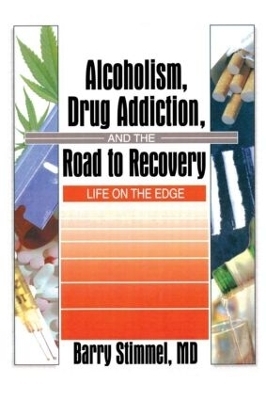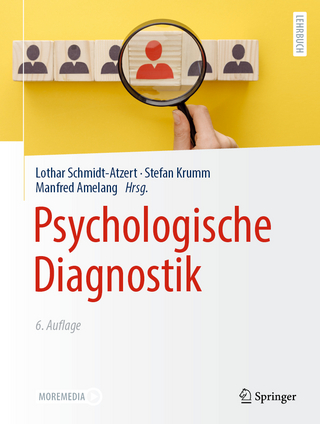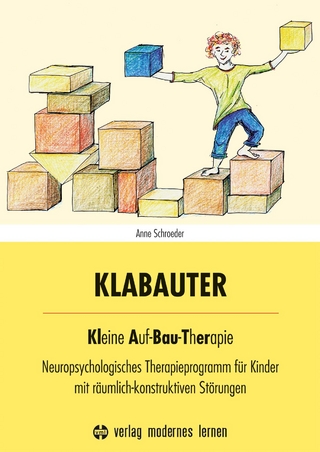
Alcoholism, Drug Addiction, and the Road to Recovery
Routledge (Verlag)
978-0-7890-0553-3 (ISBN)
who typically uses drugs and the reasons why they do
how to classify mood-altering drugs
how to identify and treat drug dependency
areas of special concern such as multiple drug use, AIDS and drug use, drugs and pregnancy, drugs and sports, and drug testing technology
Chapter by chapter, this nonjudgmental book helps readers develop a better understanding of the effects of mood-altering substances and the reasons many continue to use them despite serious consequences. This is a valuable key to the nature of dependency and addiction, and the external forces (including poverty and homelessness) that promote such behavior.
Barry Stimmel
Preface Acknowledgments PART I. BASIC CONCEPTS Chapter 1. Who Uses Drugs? Drugs and the Young Adults and Drug Use, Ethnicity and Drug Use, Drugs and the Work Place, Drug Use Among the Affluent , Summary Chapter 2. Classifying Mood-Altering Drugs Types of Classification Differences and Similarities Among Drug Groups Designer Drugs Club Drugs Performance-Enhancinhg Drugs Summary Chapter 3. Habituation, Dependency, and Addiction Defining Terms Effects of Drugs on the Brain Chapter 4. Why People Use Drugs Initiating Drug Use Biological Determinants Psychological Factors Environment and Conditioning Conclusion Chapter 5. Identifying Inappropriate Drug Use and Drug Dependency Signs and Symptoms of Drug Use Addressing Drug Abuse in Your Children Laboratory Aids to Identify Alcohol and Drug Use Value of Identifying the Drug User Chapter 6. Treating Drug Dependency Available Treatment Modalities Evaluation of Treatment After Treatment The Law and Drug Treatment PART II. MOOD-ALTERING DRUGS Chapter 7. Alcohol Patterns of Use Costs of Drinking Common Alcoholic Beverages How Alcohol Is Handled by the Body Effects of Environment Interaction with Other Drugs Dependency and Withdrawal Adverse Effects Diagnosis Reasons for Excessive Drinking Alcoholism: A Disease or a Psychological Disorder? Summary Chapter 8. Central Nervous System Depressants and Antianxiety Agents Patterns of Use Barbiturates Nonbarbiturate Hypnotics and Sedatives Other Central Nervous System Depressants Benzodiazepines Miscellaneous Antianxiety Agents Chapter 9. Powerful Hallucinogens, Phencyclidine, and Ecstasy Classification Adverse Effects of Hallucinogens Ecstasy Phencyclidine Ketamine Chapter 10. Marijuana Reefer Madness Patterns of Use Tolerance, Dependency, and Withdrawal Adverse Effects Moving to Stronger Drugs Medical Uses of Marijuana Conclusion Chapter 11. Opiates and Opioids Opium Preparations Action of Opioids on the Brain Effects of Opioids on the Body Tolerance, Dependency, and Withdrawal Opioids Susceptible to Nonmedical Use Opiate AgonistsAntagonists Partial Opioid Receptor Agonists Chapter 12. Heroin Addiction Heroin from Opium: The Street Trade Getting High and Coming Down Prevalence Adverse Effects The Challenge of Treating Heroin Addiction Measuring Treatment Effectiveness Chapter 13. Amphetamines, Amphetamine-Like Drugs, and Caffeine Amphetamines Amphetamine-Like Drugs Caffeine Chapter 14. Cocaine Patterns of Use Cocaine Metabolism Dependency, Tolerance, and Addiction Adverse Effects of Cocaine Treatment of Cocaine Dependency Chapter 15. Nicotine Cigarette Smokers Today Available Nicotine Products Ingredients in Tobacco Dependency, Tolerance, Addiction, and Withdrawal Adverse Effects of Smoking Treatment Chapter 16. Volatile Solvents, Anesthetics, and Organic Nitrites Volatile Solvents Anesthetic Agents Organic Nitrites PART III. AREAS OF SPECIAL CONCERN Chapter 17. Multiple Drug Use Alcohol and Other Drugs Smoking and Drug Use Opioids Cocaine Marijuana Treatment Chapter 18. AIDS and Drug Use HIV: The Human Immunodeficiency Virus Preventing HIV Transmission Treatment of AIDS Relationship Between the Use of Non-Injecting Mood-Altering Drugs and HIV Infection Summary Chapter 19. Drugs, Pregnancy, and the Newborn Incidence of Drug Use During Pregnancy General Effects of Drugs on Pregnancy Outcome Human Immunodeficiency Virus
| Verlagsort | New York |
|---|---|
| Sprache | englisch |
| Maße | 152 x 229 mm |
| Gewicht | 576 g |
| Themenwelt | Geisteswissenschaften ► Psychologie |
| Medizin / Pharmazie ► Allgemeines / Lexika | |
| Sozialwissenschaften ► Soziologie | |
| ISBN-10 | 0-7890-0553-0 / 0789005530 |
| ISBN-13 | 978-0-7890-0553-3 / 9780789005533 |
| Zustand | Neuware |
| Haben Sie eine Frage zum Produkt? |
aus dem Bereich


